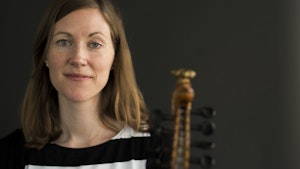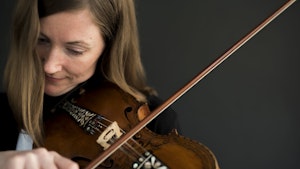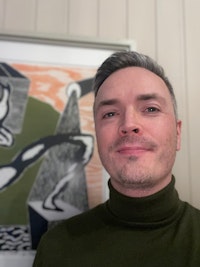Odd? No, not at all – because Ellestad’s doctoral project is based on a colourful history of musicians who hung on firmly to things Norwegian on American soil.
Hardanger fiddle discovered
It all began with the TV programme broadcast from the opening ceremony of the Olympic Games in Lillehammer. Through the flicker of painted faces, Olympic flame, cowbells and skydivers, the most Norwegian of all things Norwegian were transformed into centre-stage ingredients – and Laura Ellestad’s father suddenly felt a sneaking patriotism. His grandparents had emigrated from Valdres to Canada in the 1910s and were keen to integrate. “So the kids never learned Norwegian,” says Laura Ellestad in her sonorous Valdresian dialect.
Laura’s father discovered the Hardanger fiddle, and although his daughter did not immediately take a shine to Norwegian folk music, it would nevertheless turn out to be crucial to the choices she was to make in later life.
“I actually played rock fiddle, and studied for a Bachelor’s degree in Victoria on Vancouver Island,” says Ellestad. “But my parents started to perform Norwegian folk dances on the living-room floor and one day the great traditional musician Tore Bolstad came to visit from Valdres.”
“I had an hour with him, and suddenly everything felt completely right. I was 21, and of all the music genres I was interested in, Hardanger fiddle music soon became the musical language I felt most at home with. My parents had certainly had an influence on me, and the music had quite simply wormed its way into my brain unconsciously.”





